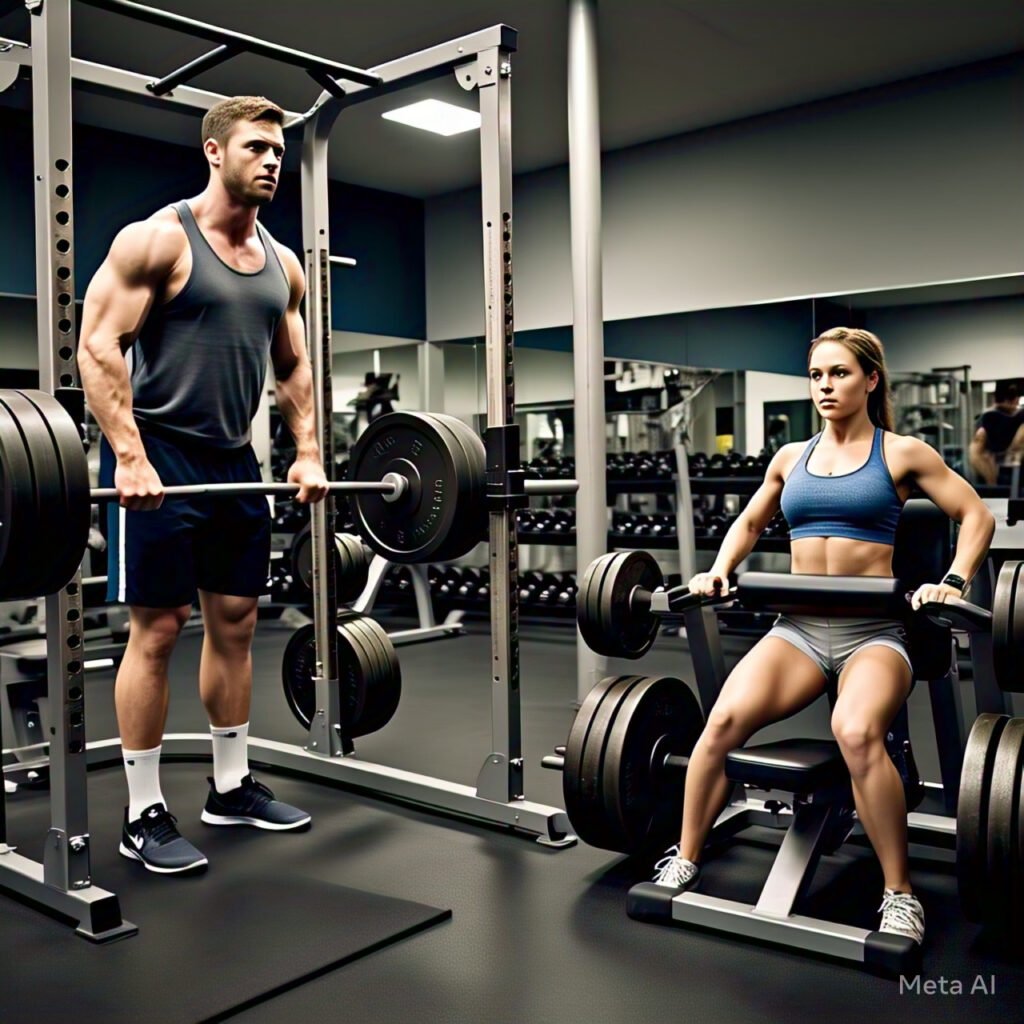
When comparing free weights (e.g., dumbbells, barbells, kettlebells) and machines in strength training, each has distinct benefits, techniques, and effectiveness for building muscle and improving performance. Below is a detailed breakdown:
1. Benefits of Free Weights
- Functional Strength & Mobility:
Free weights require stabilization from accessory muscles, improving coordination, balance, and real-world functional strength. - Greater Range of Motion (ROM):
Allows for natural movement patterns (e.g., squats, deadlifts), enhancing muscle activation and joint health. - Versatility:
Can be used for compound lifts (bench press, overhead press) and isolation exercises (bicep curls), making them ideal for full-body training. - Progressive Overload:
Easily adjustable in small increments (e.g., adding 2.5 lbs plates), crucial for long-term strength gains. - Core Engagement:
Many free-weight exercises (e.g., farmer’s walks, cleans) engage the core and stabilizer muscles, unlike most machines.
2. Benefits of Machines
- Isolation & Targeted Muscle Growth:
Machines restrict movement to a fixed path, allowing focused stress on specific muscles (e.g., leg extensions for quads). - Safety & Ease of Use:
Reduced risk of injury for beginners due to guided motion and no need for stabilization. - Recovery & Rehabilitation:
Useful for injured athletes or those with mobility limitations (e.g., post-surgery leg press). - Time Efficiency:
Quick setup and no need for a spotter, making them ideal for high-volume training. - Overcoming Plateaus:
Machines can help target weak points (e.g., hamstring curls if deadlifts are stalling progress).
3. Technique Differences
- Free Weights:
- Require proper form to avoid injury (e.g., maintaining a neutral spine in deadlifts).
- Engage more motor units due to stabilization demands.
- Allow for variations (e.g., incline vs. flat bench press).
- Machines:
- Fixed movement patterns reduce technique errors but limit functional carryover.
- Easier to maintain tension on muscles (e.g., Smith machine for controlled reps).
- Some machines mimic free-weight motions (e.g., cable machines offer semi-free resistance).
4. Effectiveness for Muscle Growth (Hypertrophy)
- Free Weights:
- Superior for compound lifts, which recruit multiple muscle groups (e.g., squats stimulate quads, glutes, hamstrings, and core).
- Higher hormonal response (testosterone, growth hormone release) due to full-body engagement.
- Machines:
- Better for isolation work (e.g., chest fly machine for pectorals).
- Can enhance muscle hypertrophy by allowing constant tension (e.g., slow eccentrics on a leg curl machine).
Studies suggest: A combination of both yields optimal hypertrophy, as machines can supplement free-weight training for weak points.
5. Effectiveness for Performance (Strength & Power)
- Free Weights:
- Essential for athletes (e.g., Olympic lifts improve explosive power).
- Carryover to sports performance due to dynamic stabilization requirements.
- Machines:
- Limited functional carryover but useful for rehab or accessory work (e.g., seated calf raises for jumpers).
- Some advanced machines (e.g., pneumatic resistance) help with speed training.
6. Practical Recommendations
- Beginners: Start with machines to learn movement patterns, then transition to free weights.
- Intermediate/Advanced Lifters: Prioritize free weights for compound lifts, using machines for isolation and burnout sets.
- Bodybuilders: Use both—free weights for mass-building compounds, machines for sculpting muscles.
- Athletes: Focus on free weights for performance, with machines for injury prevention/rehab.
Final Verdict
- Free weights are superior for functional strength, athletic performance, and core development.
- Machines excel in isolation, safety, and rehabilitation.
- Optimal training programs blend both for balanced muscle growth and injury prevention.
